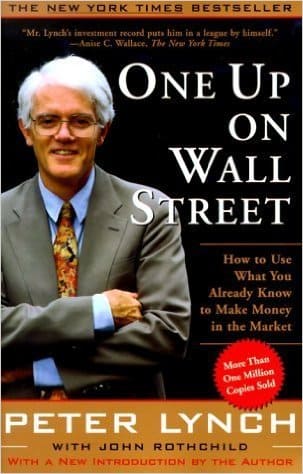Let’s start with the one up on wall street summary written by Peter Lynch.

To begin with the writer’s introduction, Peter Lynch is an American financial backer and an unbelievable asset director. He was the director of the notable Magellan Fund at Fidelity Investments during 1977 and 1990 which expanded from $18 million to $14 billion ie created a 29.2 % yearly return for a very long time!
As the title recommends, this book demonstrates that effective contributing can be accomplished by nearly anybody and in addition to the Wall Street speculation masters with some stock examination and discipline in the field. In the underlying section of the book, Lynch gives a genuine assessment to every individual who is new to contributing. His recommendation is that “just put resources into what you can bear to lose without that misfortune
affecting your day to day routine soon”. He accentuates on one’s monetary security before one dives into the universe of contributing. For instance, he proposes that one should possess house before one puts into stocks. Further, he advices to “Put resources into what you know”. This is one of Lynch’s fundamental contributing procedures. He proposes that chances for creating an incredible venture can be found in the organizations directly close to you. Neighborhood organizations that you comprehend and have a direct encounter make for an extraordinary venture gave further exploration is done on them. Ordinary citizens can get the chance of good returns even before the Wall Street master approves the value of the organization by putting resources into them.
Then, he proposes arranging the stocks into various containers first to show up at the right cost of the stock. Slow producers or sluggards are “huge and maturing” organizations that are described by a little development pace of 2–5%, yet give a liberal and stable progression of profit. Lynch’s undeniable counsel is to comprise a more modest part of the portfolio with these stocks. Stalwarts are normal
development set up organizations having a that have a profit development pace of 10–12%. They give significant yields however just over the long haul. Since these organizations have perhaps the best central and create typical gains, he proposes holding a couple of stalwarts in the portfolio. Quick cultivators are as Lynch puts it, “little, forceful new ventures that develop at 20–25% every year”.
Lynch’s beloved classification of the six distinct stocks were quick cultivators and he basically inclines toward quick producers which were in a sluggish development industry. Repetitive organizations extend and contract over and over not at all like the quick cultivators that ceaselessly grow. Their incomes and benefits go up and tumble down in an erratic manner. Lynch encourages to time the interest in these organizations
to receive the rewards of the right cycle. Turnarounds are particular from the lethargic gowers and are recognized as “no cultivators”. They turnaround or bounce back from their battered, discouraged state to give great returns in a time of a couple of years. Resource plays are resources like land, property or even money that has been ignored by the market while esteeming the organization’s stock. Lynch suggests claiming these stocks since their value is ordinarily underestimated.
Recommended Reading
If you like one up on wall street summary, you may also enjoy the following books:

Top site ,.. i will save for later !